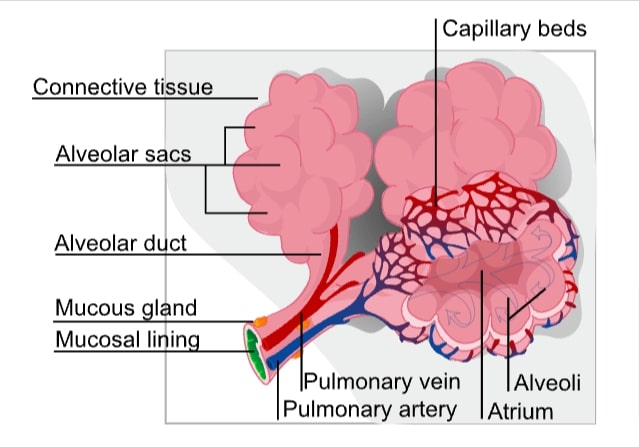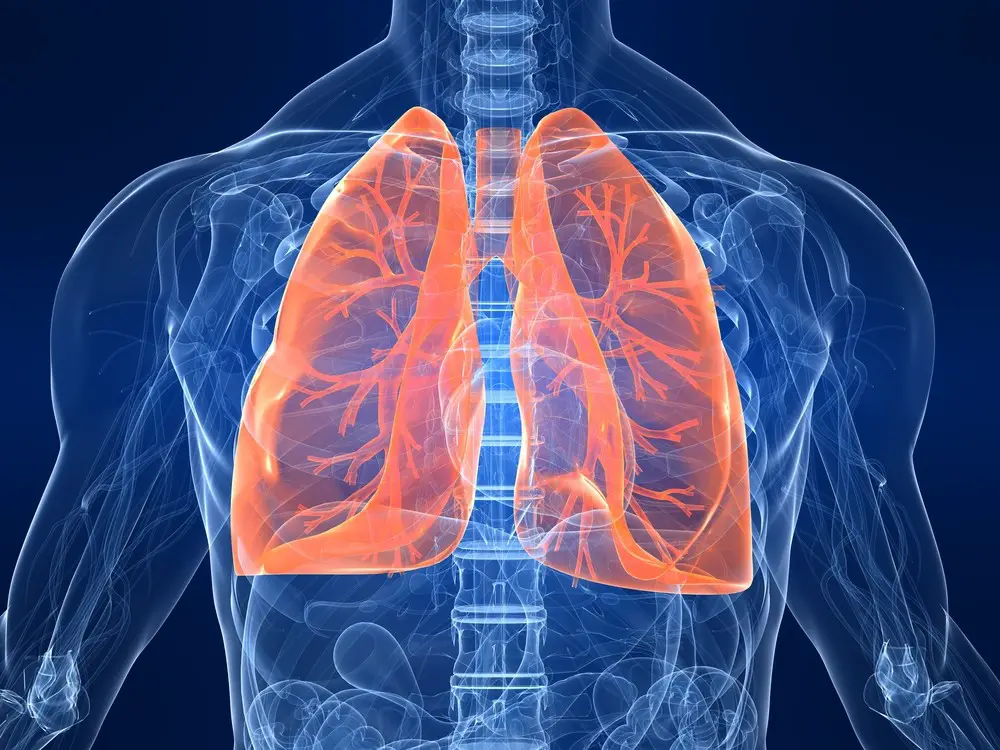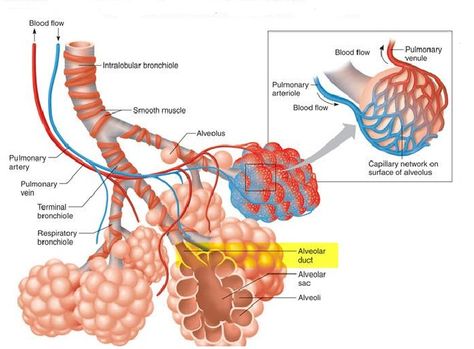Table of Contents
The surface area of the human lungs: Equal to tennis court
Do you know what the surface area of the human lungs is? The surface area of the human lungs is around 60 square meters. Now can you imagine how large that is? You can compare it with a tennis court. Now, why so large a surface area. Our oxygen supply for the whole body comes from the lungs.
And in the lungs exchange between carbon dioxide and oxygen takes place on the respiratory surface of the lungs. We need a lot of gaseous exchange to maintain all of our metabolism. So we need a larger surface area to ensure faster gaseous exchange. The large surface area we do not understand.
Because it remains in the form of an alveolar surface. Due to some diseases, this surface area sometimes reduces drastically. They face difficulty in breathing.

In Which Animals, Breathing Occurs Through Lungs?
Amphibians like frogs and toads, birds, and mammals breath through lungs but in the case of frogs besides lungs, they can breathe through their skin, in the case of humans lungs not only take part in breathing, lungs take part in excretion also.
What is the Role of the Lungs in Respiration?
During aerobic respiration respiratory materials break down with the help of oxygen and this process meets our energy requirements but the oxygen required during aerobic respiration comes in some animals with the help of lungs, inside lungs gaseous exchange take place where oxygen dissolve into blood and the carbon dioxide produced during respiration goes outside of the body.
How Gaseous Exchange Takes Place in Lung?
In the lungs, the wall of alveoli is highly vascularised with blood capillaries and the wall of alveoli makes the respiratory surface. On the respiratory surface carbon dioxide comes out from the blood capillary and oxygen present in the alveoli diffuse into the capillary blood.

In Human, Why the Two Lungs are Different in Size?
In humans, the right and the left lungs are not equal in size, the left lung is a little bit smaller than the right lungs. It is due to the accommodation of the heart on the left side in our chest cavity but the right lung is much shorter and broader than the left lung because on the right side liver is present and the shorter right lung leaves some space for the liver.
Can Human Live with Single Lung?
Its short answer is Yes, humans can live with a single lung in case of a lung is removed due to any serious medical conditions because the single lung can provide a sufficient amount of oxygen need to respire and can easily remove the carbon dioxide efficiently for a healthy person.
What is The Respiratory Surface in Lung?
In simple words, respiratory surface refers to the surface where gaseous exchange for respiration occurs and it may be the general body surface of any specialized organ like lungs or gills. Inside lungs sac-like structure present at the end of bronchioles, alveoli which makes a surface where gaseous exchange takes place and the respiratory surface is highly vascularised with blood capillary. The animals in which the general body surface acts as respiratory surface are generally moist and highly vascularised.

Resource: Surface area of human lungs
If you want more information about the surface area of the human lungs then you can research more on Google or YouTube or Wikipedia.
| why 2 lungs of humans are not equal in size |
| Breathing in Different Animals |
| Differences Between Aerobic and Anaerobic Respiration |
| Aerobic Respiration Detailed Study |
| Cardiac Cycle Phases |
How Our Lungs Accommodate A Surface area Almost Equal to a Tennis Court?
In our lungs, there are around 60 square meters of surface area but in external appearance, our lungs are not so big then how do lungs can accommodate such a large surface area? It is possible due to numerous alveolar sac and fine blood capillaries on the wall of the alveolar sac. if we calculate the sum of the surface area of the alveolar sacs and blood capillaries associated with it then it will surprise us.
Why do we Need a Large Surface Area in Our Lungs?
In our lungs, the respiratory surface is responsible for meeting all the oxygen required for our body cells and removal of the carbon dioxide and much the respiratory surface area much fast we can get oxygen and remove carbon dioxide. So we can say that respiratory surface area is a factor for faster gaseous exchange and we can assume that respiratory surface area is a factor for the efficiency of our respiration.
What is the average Respiratory Surface Area of Human Lungs?
In Human lungs, the surface area is mostly determined by the number of alveolar sacs and on average human, lungs contain about 700 million alveolar sacs. If we calculate the surface area of a total of 700 million alveolar sacs then it produces around 65 to 70 square meters and if you compare the surface area of the respiratory surface in human lungs then it would be equivalent to a tennis court.
What are the factors which can reduce the respiratory surface area of our Lungs?
Respiratory surface area determines our efficiency in the supply of oxygen and removal of carbon dioxide so if the surface area of our lungs decreases then we face different types of difficulties in respiration. In some diseases like emphysema, the alveolar wall is damaged, and over time the overall surface area decreases and it causes difficulties in respiration.
Hi Everyone!!! Welcome to Imaluop. Imaluop always try to learn some new and he want to share to other people. Here we will try to learn various topics on Science, specially on Biological Sciences.